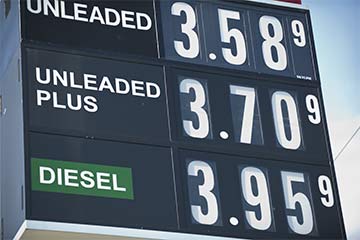Air pollution is beginning to creep into the national consciousness. The problem has been recognised worldwide for many years, but – as is often the case with environmental issues – its impact has been majorly downplayed.
Jacqueline McGlade, the UN’s chief environmental scientist, recently called for further urgent efforts to improve air quality in London. In a statement released prior to a major summit on 4th November, McGlade said that the main causes of the problem were increased use of fossil fuels in road transport and failure to control exhaust emissions from diesel vehicles.
Solutions offered in the statement included development of public transport, walking and cycling infrastructure, congestion charges and promotion of eco-driving.
Of course none of these are new ideas, and McGlade’s words do not come as a surprise to those following London’s environmental situation.
Our capital is one of the most polluted cities in the world. Earlier this year, it was reported that parts of London had breached the EU’s hourly limits for nitrogen dioxide production just one week into January. In 2015, Oxford Street – one of the city’s most congested areas – breached the hourly level over a thousand times.
According to a 2015 report released by researchers at Kings College London, over 9,000 people per year die prematurely in the capital as a result of air pollution. Two key pollutants were examined in the study – the toxic gas nitrogen oxide (NO2) and fine particulates known as PM2.5s. NO2 has been proven to affect human lung capacity and growth.
Polluted air is an international killer. Medical journal The Lancet recently reported that 6.5 million deaths across the globe are linked to air pollution every year.
Here’s some more sobering statistics: air pollution kills more people than HIV and AIDS, tuberculosis and road injuries combined. It kills more people than malnutrition and obesity. All these things have been recognised as pressing issues by policy makers, and brought to the forefront of public discussion. Meanwhile, the threat of polluted has lurked in the shadows, failing to be addressed.
In China, a nation severely affected by the problem, 4,000 people are estimated to die every day from heart and lung problems caused by polluted air.
Last week, the Indian government declared an “emergency situation” in Dehli following six days of heavy smog – an NGO based in the city said air pollution levels were at a 17 year high.
Some of the worst affected members of the global population are babies and children – air pollution stunts lung development, leading to life-long respiratory problems and early deaths. Scientists have also linked poor air quality to slow brain development and psychological problems.
So what can be done? Since the election of new London Mayor Sadiq Khan in May this year, there has been a further push from City Hall to address the fast growing problem.
Khan’s campaign for a ‘Greener, Cleaner London’ is motivated by the Mayor’s ambitious plan to make London one of the world’s cleanest cities. So far, he has announced plans for an Ultra-Low Emission Zone in central London and an introduction of Clean Bus Corridors, as well as several other policies.
Khan’s environmental thinking is what the city needs, but as winter approaches, our burning of fossil fuels will increase and more dangerous emissions will be produced.
At this moment, the future looks bleak for London’s air. Making it cleaner will require radical and expensive reform.
IMAGE: Flickr




